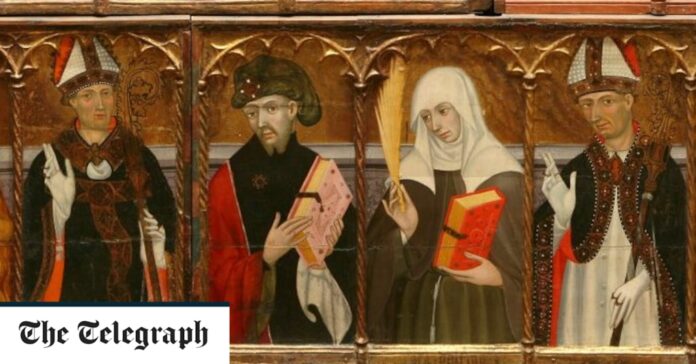In Vic, Catalonia, an astonishing great oil painting on panels includes a gallery of 10 saints depicted like fresh portraits
I became an enthusiast for the little cathedral city of Vic in Catalonia when I pottered around it a couple of weeks ago. It’s tempting to think oneself in touch with life there centuries ago. In reality what you see often has only the name of things that disappeared long ago.
In Vic, an old church called the Carme (in Catalan; Carmel in English) hasn’t been a Carmelite monastery since the Spanish dissolved their religious houses in a frenzy of liberal iconoclasm in 1836. The church is on a boulevard or rambla round the historic centre. No alleys run from it into the main square because along the rambla city walls once stood.
Where there used to be a gate in the walls, an old passageway (named, I’m glad to say, after St Christopher, or Cristòfol in Catalan) runs from the Plaça Mayor to the Plaça Santa Clara. But there is no sign of any church of Santa Clara. It was destroyed in the Civil War. The Banco Santander stands on the site, beside the horribly post-modernised remains of the Posada Colon.
Santa Clara was the convent founded in the High Middle Ages for Franciscan nuns that we call Poor Clares in English – Clarisses in Catalan. But the convent and its church had, long before they were burnt, been transferred to Dominican nuns, inspired by St Dominic. These commissioned a fine new sculpted Baroque altarpiece, destroyed with the church. But, in 1889 an outstanding painted wooden altarpiece made in the early 15th century had been saved when it came into the possession of Vic’s museum of medieval art, called by its initials the MEV.


